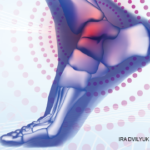Rheumatologists care for patients with assistive devices such as knee braces or foot orthotics. Although not involved in fitting patients with the appliances, rheumatologists still need to know how to manage these patients and evaluate how their assistive devices work to lessen pain and other problems.
“An orthotic is a device meant to assist a part of the body to achieve functional tasks,” says Howard Hillstrom, PhD, director of the Leon Root, MD, Motion Analysis Laboratory at the Hospital for Special Surgery in New York City. “Knee osteoarthritis [KOA] can be treated in many ways, ranging from pharmaceuticals to nutraceuticals, exercise, and surgery, when indicated. Orthotics is a part of our armamentarium and can address pain as well as its root causes.”
Malalignment, high body mass index (BMI), and tissue injury, such as torn ligaments, are the three major reasons for developing KOA and foot problems. Orthotics are designed to address these issues by improving alignment and redistributing joint loads. Based on the concept that lower-extremity structure and function are related, improving structure should help alleviate functional problems.
Use Unsettled
Currently, the use of orthotic devices such as bracing and support remains unsettled. Clinical trials have not yet provided unequivocal evidence that allows practitioners to know exactly the role orthotics can play among patients with KOA and/or foot pathologies.
“I believe that, as a field, we are at a point where we think there may be some groups of patients who would benefit from orthotics,” says Smita Rao, PhD, assistant professor in the department of physical therapy at New York University. “The challenge for the future is identifying who these people are.”
In the interim, she thinks most clinicians tell their patients that, while the science remains contentious, they should try it and see if it works. It helps that the area of science that is the most settled is the one that suggests there are very few adverse effects to the use of orthotic devices. Treatment-based classification is being used more frequently to identify those who are good candidates for a specific device.
Compared with other options, the use of assistive devices is relatively inexpensive, which can be another consideration in the treatment of knee OA and various foot-related problems. More research is needed to clarify which patients may benefit from over-the-counter (OTC) technology and which will require custom-made orthoses.
Noncustom Device Use Growing
“One of the biggest changes over the last few years has been growing support in the literature for noncustom devices,” notes David Nolan, PT, DPT, MS, OCS, CSCS, clinical specialist at the Massachusetts General Hospital Sports Physical Therapy Department and associate clinical professor in Northeastern University’s Physical Therapy Department. “A number of studies show that there is not much variance between custom and noncustom orthoses.”
